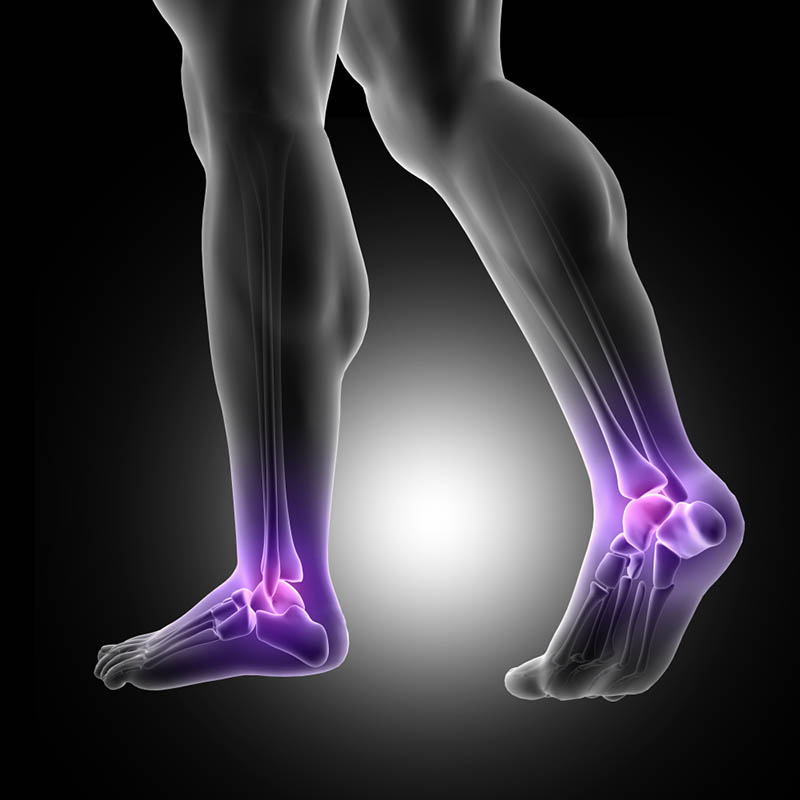Ankle pain when walking is a common yet disruptive issue that can affect your daily routine, mobility, and overall quality of life. Whether it strikes suddenly due to falls, dislocations, or develops gradually from wear and tear, ankle discomfort can stem from a variety of causes ranging from mild overuse to more serious underlying conditions …
Ankle pain when walking is a common yet disruptive issue that can affect your daily routine, mobility, and overall quality of life. Whether it strikes suddenly due to falls, dislocations, or develops gradually from wear and tear, ankle discomfort can stem from a variety of causes ranging from mild overuse to more serious underlying conditions like arthritis or nerve damage. Addressing ankle pain when walking early is crucial to prevent long-term complications and ensure a smooth recovery with the help of Expert podiatric services in Wisconsin.
Understanding Ankle Pain When Walking
Experiencing ankle pain when walking often means that something is interfering with the normal function of the joint and surrounding tissues. The pain may be sharp, dull, or throbbing and can present in different locations such as the front, back, or top of the ankle. It often leads to changes in range of motion, stability, and overall mobility, affecting your ability to perform everyday tasks.
According to a cross-sectional study published in PLOS ONE, approximately 11.7% of adults aged 50 and older who live independently report experiencing ankle pain. This statistic highlights how common ankle pain when walking is among older adults, especially due to wear and tear, arthritis, or reduced range of motion. Early intervention is key to maintaining mobility and quality of life in this population.
Common Reasons for Ankle Pain When Walking
There are numerous possible reasons for pain in ankle when walking, including acute trauma like fractures or sprains, and chronic conditions such as tendinitis, bursitis, or plantar fasciitis. In some cases, you might experience ankle pain when walking no swelling, which can indicate nerve or joint capsule involvement. Understanding what triggers your discomfort—whether it’s activity-related or from underlying disease like gout or rheumatoid arthritis—is key to effective management.
Causes of Ankle Pain: What You Should Know
Ankle pain when walking may originate from several sources, each requiring different approaches to treatment. Causes range from ligament injuries and tendon overuse to systemic issues such as autoimmune disease.
Insights from the Hospital for Special Surgery (HSS) reveal that many patients with chronic ankle pain describe a slow onset of discomfort that worsens over time, often without a specific injury. This gradual progression is commonly associated with conditions like osteoarthritis, tendinitis, or nerve damage. Recognizing these subtle signs early can lead to more effective conservative therapy for ankle pain and help avoid long-term complications.
Injuries and Conditions Behind Ankle Pain
- Sprains and Strains: Ligament injuries like an ankle sprain can cause immediate swelling, tenderness, and instability, making it hard to walk.
- Arthritis: Both osteoarthritis and rheumatoid arthritis affect the ankle joint, leading to stiffness, redness, and long-term joint capsule damage.
- Tendonitis: Inflammation in tendons like the Achilles tendonitis or tibialis anterior tendonitis causes pain especially when moving.
- Stress Fractures: Often result from repetitive activity and manifest as pain in ankle when walking with no obvious swelling.
Specific Causes for Pain in Front or Top of Ankle
Pain in front of ankle and top of foot when walking may be caused by several underlying issues:
- Tibialis anterior tendonitis: Inflammation of the tendon that helps lift the foot.
- Extensor tendonitis: Commonly triggered by tight shoes or poor foot mechanics.
- Tarsal tunnel syndrome: A nerve entrapment condition causing burning or tingling.
- Lacing pressure: From tight footwear can create pain on top of foot near ankle.
Pain in Back of Ankle or Heel When Walking

- Achilles tendon rupture: A sudden tear causing intense pain and inability to walk properly.
- Heel bursitis: Inflammation of the bursa near the heel bone due to overuse.
- Achilles tendonitis: Causes chronic calf pain, tightness, and discomfort especially during uphill walking.
Symptoms That Often Accompany Ankle Pain
In addition to pain, several other symptoms often signal a more serious issue:
- Swelling, bruising, or redness around the ankle area.
- Stiffness and limited range of motion.
- Inability to bear weight or difficulty walking.
- Instability or a feeling that your ankle may give out.
These signs should not be ignored and warrant professional assessment.
How Is Ankle Pain Diagnosed?
Diagnosis involves multiple methods including a thorough medical history evaluation and physical examination. Physicians may use imaging tests like X-rays, CT scans, ultrasound, or MRI to evaluate bones, ligaments, and tendons. Inflammatory markers may be evaluated through blood tests, and joint fluid may be examined via joint aspiration if gout or infection is suspected.
Effective Treatments for Ankle Pain
A wide variety of options exist to treat ankle pain when walking, depending on its source. Non-invasive options are often the first line of defense.
Conservative Care and Home Remedies
- Rest: Essential for tissue repair and reducing strain.
- Ice Packs: Reduce swelling and soothe irritated tissues.
- Compression Bandage: Helps stabilize the joint and reduce fluid buildup.
- Elevation: Enhances circulation and reduces inflammation.
- Orthotics: Devices like arch support or heel drops relieve pressure and improve gait.
- Physical Therapy: Includes ankle circles, calf stretching, and muscle strengthening exercises to restore strength and range of motion.
These steps form the foundation of conservative therapy for ankle pain.
Medical and Surgical Treatments
For severe or persistent cases, additional treatments may be needed:
- NSAIDs: Help reduce severe pain and inflammation.
- Corticosteroid injections: Alleviate chronic pain from bursitis or arthritis.
- Ankle arthroscopy or ankle surgery: Used in complex cases such as dislocated ankle or fractured ankle that haven’t healed with conservative treatment.
- Ankle brace: Supports the joint post-injury or post-op.
Preventing Ankle Pain: Tips to Stay Mobile
Preventing ankle pain when walking is often a matter of being proactive. Choose supportive shoes and modify your routine to reduce impact on the joint. Regular exercise programs focusing on balance, flexibility, and calf raises can prevent top of ankle pain, sprains, and overuse injuries.
How Wisconsin Foot & Ankle Clinic Can Help You
If you’re experiencing pain in ankle when walking, turn to Expert podiatric services in Wisconsin for trusted care. At Wisconsin Foot & Ankle Clinic, our team uses cutting-edge diagnostics, from MRI to ultrasound, and develops personalized care plans for lasting relief. Whether you need orthotics, immobilization, or guidance through physical rehab, we offer full-spectrum treatment from start to finish.
What’s the Outlook for Ankle Pain?

The prognosis for ankle pain when walking is excellent when addressed early. Whether caused by injury or underlying illness like autoimmune disease, most cases respond well to a combination of self-care and clinical treatment. Ignoring symptoms can lead to chronic pain, instability, or more invasive interventions down the road.
Conclusion
Ankle pain when walking should never be overlooked. Whether it’s pain in front of ankle and top of foot when walking or pain on outside of ankle, early diagnosis and conservative therapy for ankle pain offer the best path to recovery. For comprehensive care and long-lasting results, trust the specialists at Wisconsin Foot & Ankle Clinic.
FAQs
What to do if your ankle hurts when you walk?
Start with the RICE method (Rest, Ice, Compression, Elevation) and avoid aggravating activities. If pain persists, see a podiatrist for diagnosis and possible imaging.
What causes ankle pain without injury?
Common causes include osteoarthritis, tendinitis, or tarsal tunnel syndrome. Ankle pain when walking no swelling may suggest nerve-related issues or stress on internal structures.
What does ankle tendonitis feel like?
Achilles tendonitis or tibialis anterior tendonitis may feel like a dull ache, burning sensation, or tightness in the front or back of the ankle. It often worsens with movement or prolonged activity.







